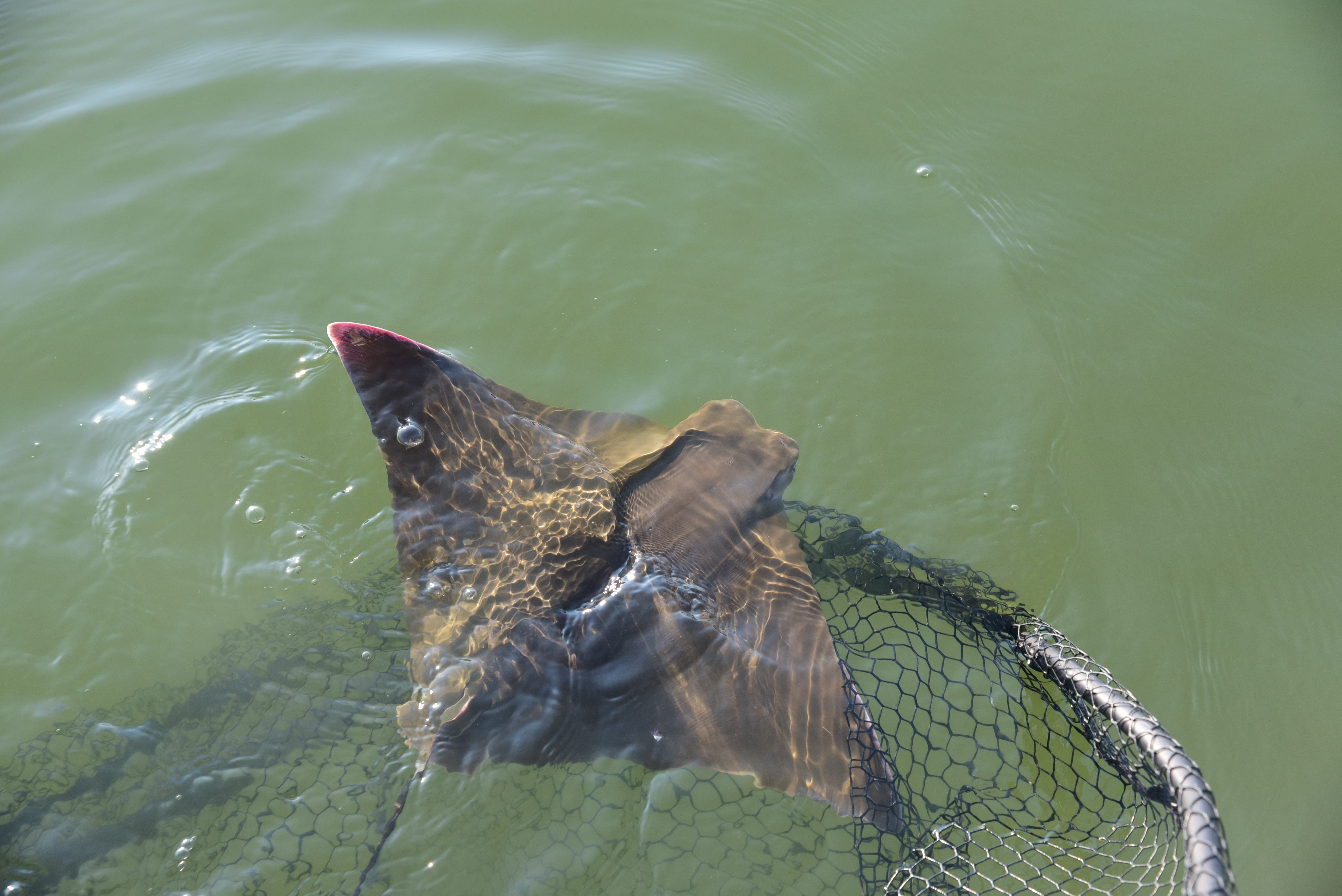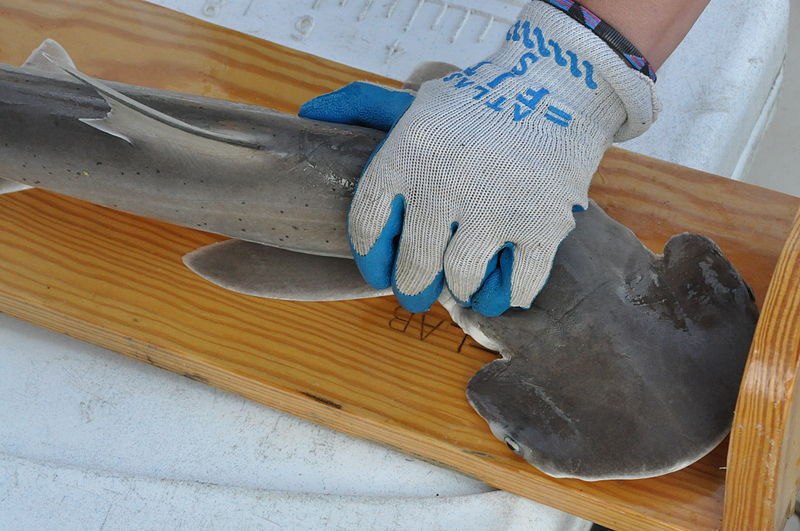If you’ve ever tickled the back of a stingray in an aquarium’s touch tank, you’ve likely introduced yourself to a cownose ray. Despite their popularity in aquaria throughout the U.S., little is known about the movements of these fish in the wild. Where do they go when they migrate? Do they return to the same place year after year? A team of researchers from the Smithsonian decided it was time to find out.
Ogburn, M.B., C.W. Bangley, R. Aguilar, R.A. Fisher, M.C. Curran, S.F. Webb, and A.H. Hines. 2018. Migratory connectivity and philopatry of cownose rays Rhinoptera bonasus along the Atlantic coast, USA. Marine Ecology Progress Series 602:197-211.
Species Background
Cownose rays (Rhinoptera bonasus) are large rays that live in temperate and tropical waters throughout the coastal western Atlantic Ocean and the Gulf of Mexico. They are particularly abundant in the Chesapeake Bay in the spring and summer, where they eat bivalves, like soft-shell clams, and soft-bodied invertebrates, by foraging in sandy sediments and seagrass beds. Once cownose rays reach maturity at around 7 years old, females will give birth to a single baby stingray, called a pup, in June of each year. After pupping and mating the rays will leave Chesapeake Bay between July and October.
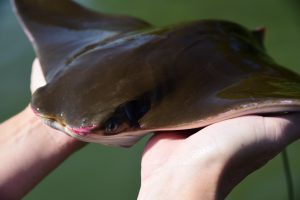
There is a growing interest in recreational harvest of cownose rays, largely because they were falsely implicated as the cause of declining shellfish populations. This led to large sport fishing tournaments for the rays in the Chesapeake Bay with the promotional slogan “Save the Bay, Eat a ray.” This has been largely debunked by researchers, who showed that over-harvest and diseases, not cownose rays, caused the drop in shellfish numbers. However, the focused harvest has raised questions from conservationists and researchers about cownose ray behavior. Because these rays only have one pup a year, if they spend much of their time in the same parts of Chesapeake Bay year after year, it would be very easy for their populations to decline quickly and dramatically. This repeated return to the same region yearly by migratory fish is known as philopatry. With these questions in mind, a research team, led by scientists from the Smithsonian, set out to document migratory patterns and philopatry in cownose rays.
Methods
Matthew Ogburn and his research team tracked cownose ray movements in the Chesapeake Bay and along the Atlantic coast using acoustic telemetry. The rays were tagged in three different regions of the bay between May and October in 2014, 2015, and 2016. The rays were tagged using a minor surgery to ensure that they kept their tags longer, helping the researchers observe their full migratory patterns.
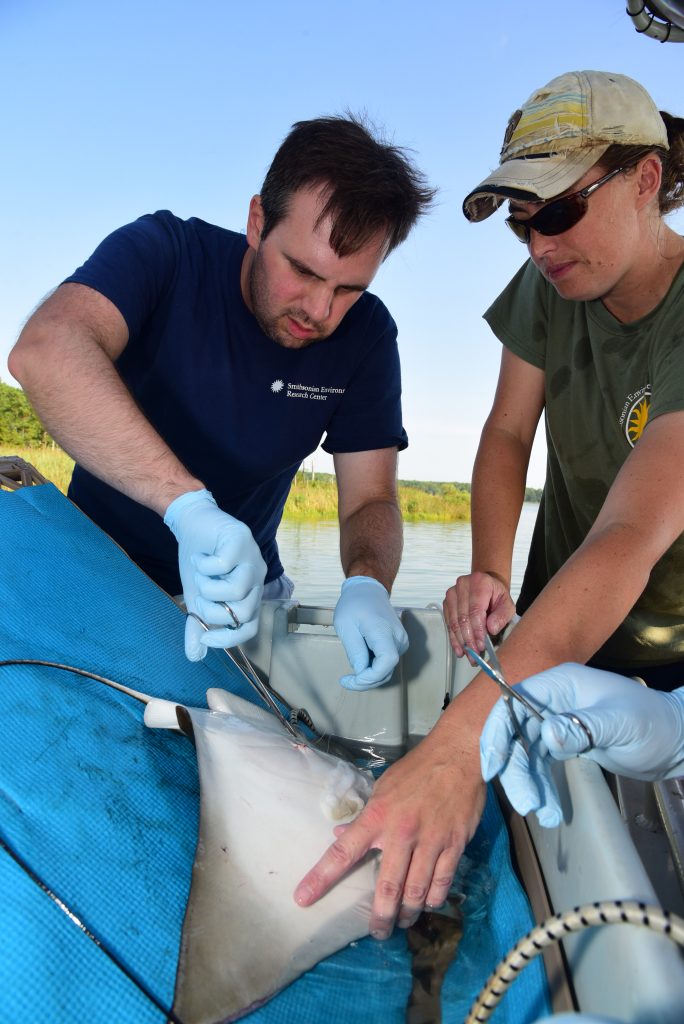
The rays were observed for 1-3 days in a holding pen to make sure they recovered from the surgery and then released near where they were captured. Two adult cownose rays were also tagged for the study near Savannah, Georgia in 2014.
After tagging, the rays’ movements were monitored in several acoustic telemetry receiver arrays managed by the Smithsonian Environmental Research Center and in arrays managed by members of the Atlantic Cooperative Telemetry (ACT) network, along the U.S. Atlantic Coast, and the Florida Atlantic Coast Telemetry (FACT) network, along the coast of Florida. Each time a tagged ray would swim within range of a receiver, the receiver would log the date, time, and tag number of the ray so they could be tracked as they moved south, out of the Chesapeake Bay towards Florida, for the winter. After the data was collected, researchers used a statistical modeling technique called Hidden Markov modeling to determine the behavior of cownose rays based on the distance they traveled, the velocity that they were traveling, and the number of days that passed between registered locations.
Results
The researchers tagged 36 cownose rays and 23 were detected for two or more years. After leaving the Chesapeake Bay, cownose rays were detected as far north as Long Island, NY and as far south as Port St. Lucie, FL. Their Hidden Markov modeling found that cownose rays had three different behavioral states based on their movements. There was the resident state, where they moved slowly over short distances and were detected regularly on receivers, the ranging sate where they moved slightly farther and faster than the resident state, and finally the migrating state where they moved quickly over much longer distances and were heard from less frequently. Cownose rays exhibited migratory behavior in the fall and spring with Chesapeake rays having longer migrations than the Savannah rays. All of the rays, regardless of where they were tagged, were tracked to the coast of Florida, around Cape Canaveral, during the winter. Philopatry was assessed in the 5 rays that were detected for three years during the May – July pupping season. Three of these rays returned to similar locations in the Chesapeake Bay where they were tagged, while the other two returned to their tagging region but not the same location.
Conservation Implications
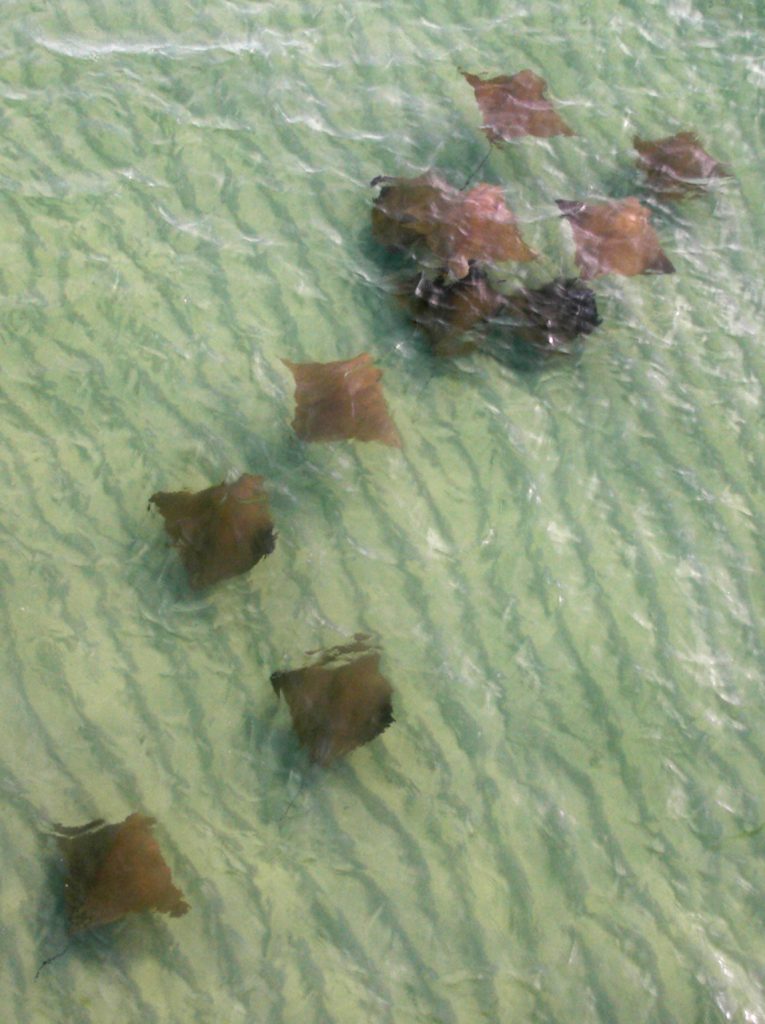
By tracking the full migration of cownose rays over three years, researchers were able to show that all rays migrated to the same location in coastal Florida each winter, while returning to more individualized estuaries to pup each summer. Resident behavior was observed in summer and winter, while migratory behavior was observed in the spring and fall. During these migrations, the rays connect over 930 miles of coastline in the Atlantic. This means that they could be an integral part of the food web throughout this coastline. Their relatively high summer and winter site fidelity means that their populations need to be managed on a state level as well as nationally.
During this migration, cownose rays to have the opportunity to interact with shellfisheries. However, some of the Chesapeake Rays were not recorded passing through estuaries in the Carolinas, where rays have been seen eating scallops. Because it is difficult to determine which rays are residents to the Carolinas or migratory just by looking at them, it is best to use exclusionary devices to manage fishery interactions as opposed to harvesting rays. This study was the first to document the full annual migration cycle of cownose rays in the U.S. Atlantic. Researchers note that we need more genetic studies to better understand stock structure, but until then the harvest of cownose rays should be minimized, especially during the summer resident period to protect the genetic diversity of populations.
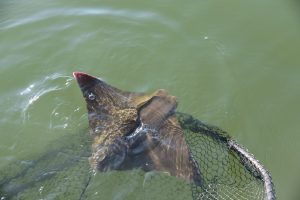
Further reading
Want to know more about animal tracking at the Smithsonian? Check out their Movement of Life initiative and the Fish and Invertebrate Ecology lab.
I am currently a Marine Science and Technology Doctoral student at the University of Massachusetts Amherst. I use acoustic and satellite telemetry to study the spatial ecology of lemon, nurse, Caribbean reef, and tiger sharks in St. Croix to better understand habitat selection, residency, and connectivity between the protected areas and areas open to fishing. I am broadly interested in the intersection of marine animal movement, particularly elasmobranchs, with fisheries management. In my free time you can find me curled up with a good book and a cup of tea or outside exploring with Deacon, the goofiest Irish setter in Massachusetts.

